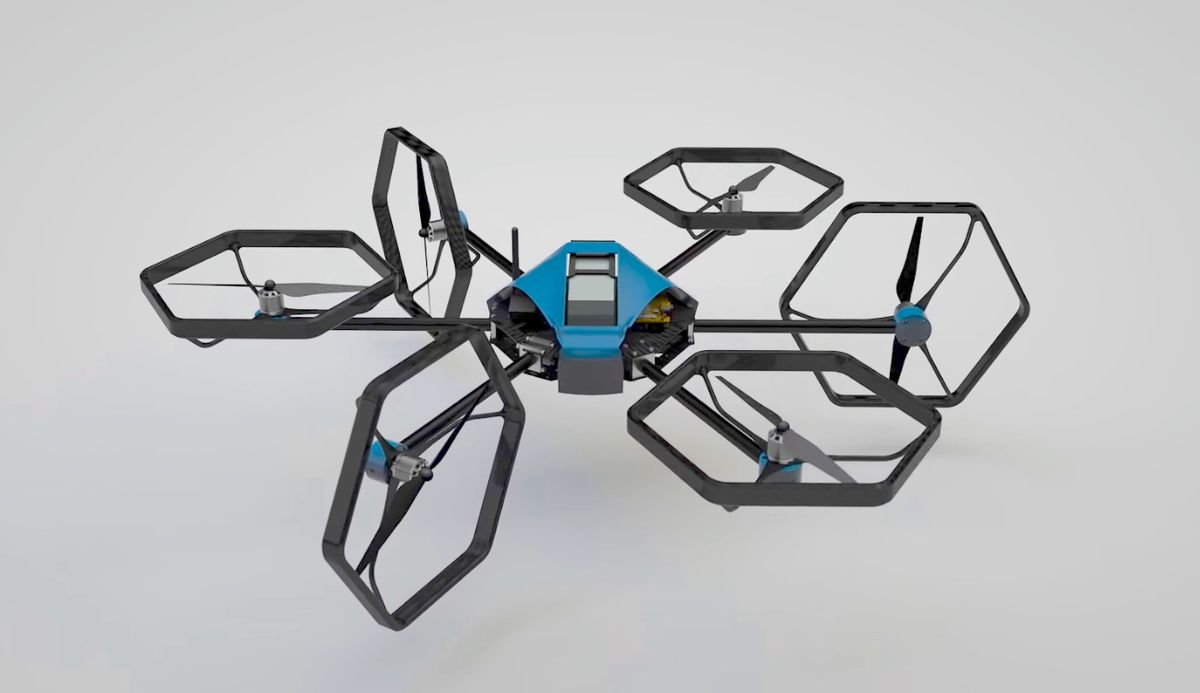Last month, we wrote about ETH Zurich’s Omnicopter, a flying cube with rotors providing thrust in lots of different directions that allow the drone to translate and rotate arbitrarily. This is very handy, for lots of different reasons, but the Omnicopter itself is rather bulky and seems destined to live out its life in a Swiss laboratory.
A team of undergrads at ETH Zurich has taken the idea behind the Omnicopter and designed an even more versatile flying robot. Voliro offers the same kind of decoupled position and attitude control, except that instead of a cube full of rotors oriented in different directions, this drone uses rotating nacelles that can turn it from a traditional hexcopter into something much more versatile and acrobatic.

Voliro is part of a focus project at ETH Zurich’s Autonomous Systems Lab that’s intended to give students in the last year of their undergraduate degrees “the opportunity to design a complete system from scratch,” which seems like a fantastic way of making the transition into graduate school with some practical robotics experience.
They managed to develop Voliro from scratch in just nine months, with impressive results:
The disadvantage of Voliro over a drone like the Omnicopter is complexity: Those rotating nacelles add more degrees of freedom (and more points of failure) to the overall design. And the control problem is also different, but the potential for versatility seems similar.
We should make sure to point out that this research builds extensively on tons of other quadrotor and multirotor research over the past several years; in our Omnicopter post, Richard Voyles from Purdue highlighted some 2010 work on a fully-actuated hexcopter with canted props (video here).
There’s also the “omnicopter” (just a name coincidence) from the Max Planck Institute for Biological Cybernetics that we covered at ICRA 2013, which also uses actuated, tilting rotors to achieve a similar effect.
From what we understand, Voliro is unique in that it’s trying to achieve a lot more than both full position and attitude control: The goal is to create an “amphibious robot” that can “fly, swim, and drive on the ground.” It’s not clear how the swimming bit is going to work, but the Voliro website is specific about a bunch of future improvements, including using three of the tilted rotor units as landing gear, and adding “a large sphere in the center of Voliro to make it roll omnidirectionally on the ground.”
If these actuated motor pods seem familiar, it’s because we’ve seen them before, on the VertiGo robot. This hybrid flying car used tilting rotors for propulsion as well as to drive straight up walls, which is very impressive. It probably won’t shock you to learn that VertiGo was also a focus project from ETH Zurich’s Autonomous Systems Lab, in partnership with Disney Research.
The ideas that come out of these focus projects are reliably creative and exciting, although we can only hope that they don’t get abandoned when the team moves on after the initial prototype is complete.
[ Voliro ]
Evan Ackerman is a senior editor at IEEE Spectrum. Since 2007, he has written over 6,000 articles on robotics and technology. He has a degree in Martian geology and is excellent at playing bagpipes.



